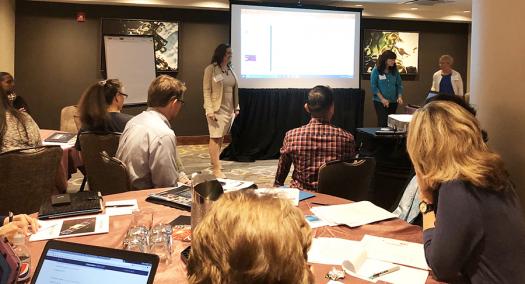Baking science into the classroom: Science News in High Schools offers teachers engaging lesson plans

“After showing An Inconvenient Truth, I had my students read an article in Science News called ‘Changing climate: 10 years after an Inconvenient Truth,'” said Donna Light, a science research teacher at Croton Harmon High School in Croton-on-Hudson, N.Y. “It offered an update, with graphs and more data. And it helped explore a disagreement brewing in the classroom with one student who was a climate change denier and others who said the data showed it was very obvious.”
Donna looks to both Science News and Science News for Students as models for how to explain concepts to her students. She keeps copies of Science News around her classroom for students to browse. “It’s important that students not to get too focused on their own research that they lose awareness of broader science,” she said.
Science News in High Schools is a great way to bring research into your classroom and engage with students.
Donna shared tips like this for how to use Science News in High Schools in the classroom to a packed room of teachers at the 2017 Research Teachers Conference, sponsored by Regeneron, on October 14. Donna presented alongside Lisa Fridman, a teacher with the Baltimore Polytechnic Institute in Baltimore, Md., and Anna Rhymes, who leads the program at the Society for Science & the Public.
Learn more about Science News in High Schools.

Since its launch in 2015, Science News in High Schools has reached as many as four million high schoolers. The program sends copies of Science News to over 4,300 schools nationwide. Teachers receive 10 issues of Science News during the school year, Educator Guides with classroom activities and lesson plans based on articles, digital access to the magazine, as well as an e-newsletter. They also become a part of a community of science teachers receiving Science News in High Schools who are working to improve their teaching and classroom offerings.
After showing An Inconvenient Truth, I had my students read an article in Science News called ‘Changing climate: 10 years after an Inconvenient Truth.’
“Science News in High Schools is a great way to bring research into your classroom and engage with students,” Anna said. “It takes award-winning journalism and gets it into schools around the world.” Anna worked in the classroom for 10 years and now works at the Society to help make its resources, particularly its science journalism, accessible to all students.
After learning about the benefits of using Science News in High Schools, most of the teachers were curious about how they could gain access to the program. Currently, the Society is searching for additional grants and funding in order to expand access to more teachers and schools.
During her presentation, Lisa explained that she either takes classroom activities directly from the Educator Guides or draws inspiration from them to design her own projects.
For example, she runs a cookie research lab with her sophomores modeled on real scientific research. “If you use something fun and engaging like cookies, they get excited about these projects,” she said. She encouraged her students to go in-depth with the cookie research, such as finding out the effect of different cooking durations, temperatures, or using butter versus oil.
If you use something fun and engaging like cookies, they get excited about these projects.
“They actually baked cookies in a toaster oven in my classroom and got to eat them,” she said. “My mission is to expose my students to different parts of science and see what they’re interested in.” Science News in High Schools enables her to do just that.


